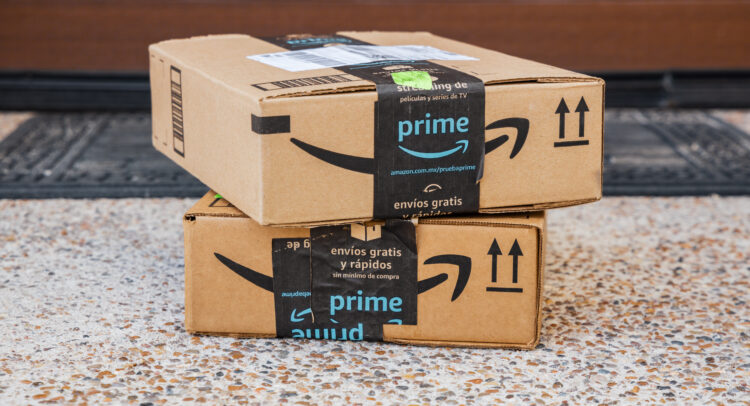Online Retail Sales have surpassed $1 trillion a year as the shopping era that was accelerated by the pandemic seems to have permanently reshaped consumer behavior, cementing the shift toward online shopping. The amplified trend is causing a change in retailing as the industry has been converting stores into fulfillment centers, closing underperforming locations, adopting AI services, reducing labor, and blending an online and offline customer experience.
Claim 70% Off TipRanks This Holiday Season
- Unlock hedge-fund level data and powerful investing tools for smarter, sharper decisions
- Stay ahead of the market with the latest news and analysis and maximize your portfolio's potential
Regardless of how big the pie is, as it has now reached a very big $1 trillion per year, embracing technology and adapting to new trends is still needed for survival in the competitive retail jungle.
Consumer Behavior: Online Shopping Is Now Ingrained
The COVID-19 pandemic has fundamentally shifted consumer behavior. With lockdowns and social distancing, shoppers turned to online platforms for their needs. This trend persisted even as restrictions eased. Convenience and safety have become paramount, with consumers increasingly comfortable with digital transactions. This change is especially noticeable in the grocery sector, where online sales surged. The habit of online shopping is now ingrained, driving the sector’s growth beyond expectations.
Explosive E-Commerce Growth
The e-commerce sector has experienced explosive growth, culminating in U.S. online retail sales and surpassing the trillion dollar mark for the first time. This milestone reflects the acceleration of digital adoption. Retailers have responded by enhancing their online presence, optimizing websites, and leveraging social media. Innovations such as augmented reality for product visualization and AI-driven customer service have further enhanced the shopping experience.
The growth isn’t limited to large retailers; small businesses have also thrived by tapping into niche markets and utilizing e-commerce platforms. What’s more, the growth trend is supposed to continue, with the 2024 full year clocking in at $1.07 trillion and 2025 rising 10% to $1.14 trillion.
Online Payment Have Advanced
The rise in online retail sales has been accompanied by advancements in online payment systems. Secure, seamless transactions are now a standard expectation. Payment technologies like digital wallets, cryptocurrencies, and Buy Now, Pay Later (BNPL) options have gained popularity. These options cater to various consumers, from tech-savvy Gen Zs to budget-conscious millennials. Enhanced security measures, including multi-factor authentication and encryption, have also boosted consumer confidence in online shopping.
Gen Zers and Millennials Are Driving the Future of E-Commerce
Gen Zers and millennials are driving the future of e-commerce, as they’re tech-savvy generations that prefer online shopping for convenience and variety. Social media platforms influence their purchasing decisions, with targeted ads and influencers playing significant roles.
As digital natives, they are more likely to embrace new technologies, further fueling e-commerce growth. Sustainability and ethical considerations are also important to these groups, prompting retailers to adopt eco-friendly practices. Their preferences for fast, reliable delivery, and seamless mobile experiences are shaping the industry’s future.
Key Takeaway – Retail’s Future Lies in Embracing Innovation
Online retail sales surpassed $1 trillion in just under one year with a trend that is expected to grow at 10% per year. The milestone highlights the pandemic’s lasting impact on consumer behavior and the unstoppable growth of e-commerce. Advancements in online payment systems and the increasing influence of Gen Zs and millennials are driving this trend. As consumer preferences continue to evolve, retailers are adapting to meet the demands of a digitally-driven market. The future of retail lies in embracing innovation and leveraging technology to enhance the shopping experience.
















